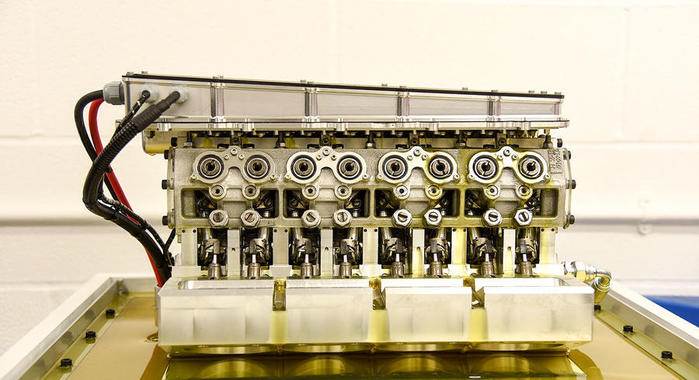Technology firm Camcon Automotive has revealed a new digital valve-train drive system called IVA (Intelligent Valve Actuation) which is claimed to give petrol engines the driveability and economy of diesels but with more benign and manageable emissions.
IVA has been under development for the past six years, reaching a sufficient stage of maturity in bench tests for road trials to begin. The system is now being offered to major manufacturers and component suppliers for development as an efficiency boost for use in both normal and hybrid cars.
According to Camcon technical director Roger Stone, who has led IVA’s development from the start, the system allows valve lift, valve timing and duration to be independently and infinitely controllable. This breaks the previously unbreakable mechanical link between valve operation and the rotation of the crankshaft that has been a factor in all piston engine design for well over a century.
IVA’s inventors describe it as a step-change in engine design that removes the last remaining analogue system, saying it is “probably even more important than the switch from points ignition to engine management, or carburettors to fuel injection”.
With completely flexible valve actuation, there’s high potential for an engine to be configured entirely according to a driver’s needs, delivering extreme flexibility in lowspeed, low-load situations, with very high power when needed.
IVA is especially adaptable to sophisticated cylinder deactivation — a likely further boost to efficiency. “IVA allows incredible control,” says Stone. “We can achieve full lift by rotating the camshaft through 360deg, or achieve any intermediate lift we like by rotating it part of the way and rotating it back again. It’s designed to fit pretty much any engine.”
Camcon has already acknowledged technical help from Jaguar Land Rover, which is based nearby and understood to be keeping tabs on developments. Camcon plans a programme of both test rig and road trials to test IVA’s durability and record real-world results, but commercial director Mark Gostick believes the system has already gone a long way to proving its durability.
If adopted by a supplier in the Bosch or Valeo mould, IVA would take two to three years to reach production, Camcon believes, and has the potential to be developed in productive new directions beyond that.



Comments
Member Login
Personal Details
No comments yet. Be the first to comment.